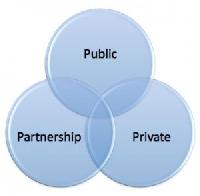What Is Public Private Partnership Model?

The railway ministry is planning to bid out 16 stations under the public-private partnership (PPP) model. These railway stations will be upgraded to ensure improved basic facilities and accessibility for passengers.
- This is in addition to the 1253 railway stations that have been identified for development under the Adarsh Station Scheme.
Public Private Partnership Model:
- It is an arrangement between the government and private sector for the provision of public assets and/or public services.
- Public-private partnerships allow large-scale government projects, such as roads, bridges, or hospitals, to be completed with private funding.
- In this type of partnership, investments are undertaken by the private sector entity, for a specified period of time.
- As PPP involves full retention of responsibility by the government for providing the services, it doesn’t amount to privatization.
- There is a well-defined allocation of risk between the private sector and the public entity.
- The private entity is chosen on the basis of open competitive bidding and receives performance-linked payments.
- PPP route can be an alternative in developing countries where governments face various constraints on borrowing money for important projects.
- It can also give required expertise in planning or executing large projects.




